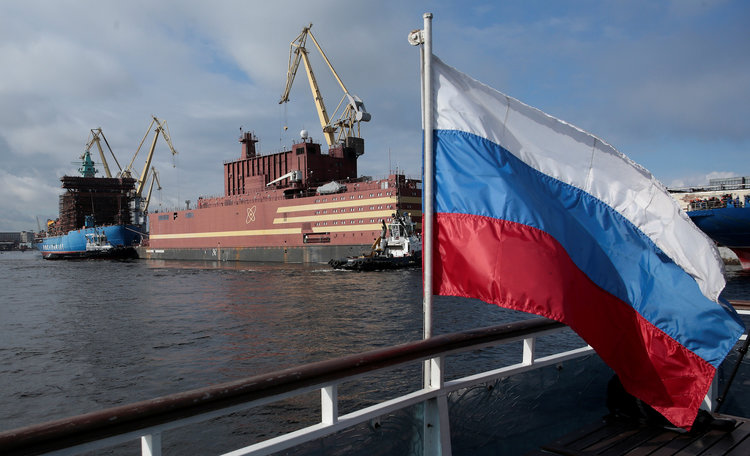Russia’s floating nuclear power plant
May 22, 2018 | Expert Insights

The world’s first sea-borne nuclear power plant is reportedly ready for its maiden mission. The power plant, which was developed by Russia has been towed to the country’s Arctic port of Murmansk to be tested.
Background
The Armed Forces of the Russian Federation was established after the dissolution of the Soviet Union. The three "branches of Armed Forces" are: the Ground Forces, Aerospace Forces, and the Navy. In 2010, the International Institute for Strategic Studies (IISS) estimated that the Russian Armed Forces numbered about 1,027,000 active troops and in the region of 2,035,000 reserves (largely ex-conscripts). According to the Stockholm International Peace Research Institute, in the period between 2005-2009 and 2010-2014, Russian exports of major weapons increased by 37%; Russia spent $66.4 billion on arms in 2015, then $69.2 billion in 2016, and has globally taken 3rd place (after the U.S. and China).
The Russian military is one of the most formidable and modern military forces in the world and its fleet is comparable to that of the US. Russia is now almost an equal to the U.S. as a power broker in the Middle East. The Kremlin is backing the Syrian government in the Syrian civil war and has become an increasingly powerful presence in Middle East politics.
According to the Federation of American Scientists, an organization that assesses nuclear weapon stockpiles, as of 2017, the Russian Federation possesses 7,300 total nuclear warheads, of which 4,500 are strategically operational. In March 2018, Russian President Vladimir Putin claimed that the nation has developed an arsenal of nuclear weapons that are invincible and can pierce through US defences. Meanwhile, the US has accused Russia of breaching Cold War-era treaties. Putin spoke about a "low-flying, difficult-to-spot cruise missile... with a practically unlimited range and an unpredictable flight path, which can bypass lines of interception and is invincible in the face of all existing and future systems of both missile defence and air defence".
Analysis
Russia has officially unveiled the world's first floating nuclear power station in the port of the far northern city of Murmansk. Once loaded with fuel, Lomonosov will be towed to the town of Pevek in Chukotka (Russian Far East). It will be connected to the region’s grid and will become operational. The power plant will be replacing a coal-fired power plant and an aging nuclear power plant Bilibino.
According to Russian authorities, this power plant will be supplying over 50,000 people with electricity and reducing carbon footprint in the Arctic by tens of thousands of tonnes of CO2 emissions each year. Rosatom Director General Alexey Likhachev commented: “We have successfully towed the power unit, not yet loaded with nuclear fuel, to Murmansk and are going to fully launch here this unique project, which was only made possible thanks to cooperation of many companies. Akademic Lomonosov is an unparalleled piece of engineering by Russian scientists. It is a first-of-a-kind, reference project for mobile medium capacity range nuclear power units, a product we expect to be in growing demand in the coming years. For instance, we see great interest from all island nations where it is difficult, for various reasons, to set up a developed centralised power transmission infrastructure.”
However, green campaigners have raised concerns over the risk of nuclear accidents. Greenpeace has dubbed Akademik Lomonosov the “nuclear Titanic.” Various environmental protection groups sent Rosatom a letter, calling for full and unrestricted regulatory oversight of the vessel. The floating power plant will not just generate electricity for Pevek, it will also be used for oil and gas exploration as Russia is pushing development further north into the Arctic. There are also concerns that it could be weaponized in the future.
Assessment
Our assessment is that Russia’s significant investments in nuclear energy and weapons could be of concern in Washington. The floating power plant is an example of Russia’s innovation in the field. However, it also poses a significant threat. The Arctic region is extremely vulnerable, and a nuclear leak would threaten the region’s entire ecosystem.








Comments